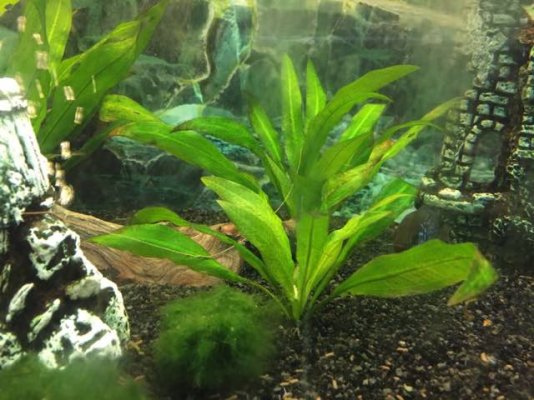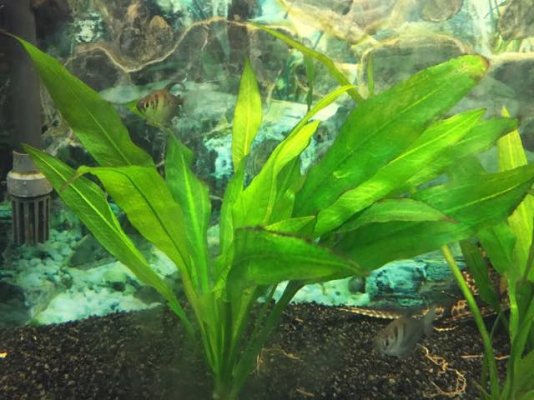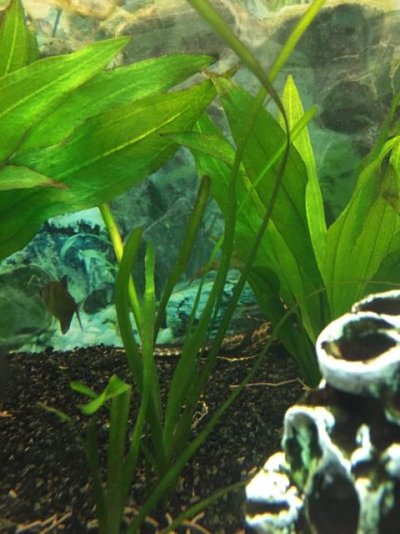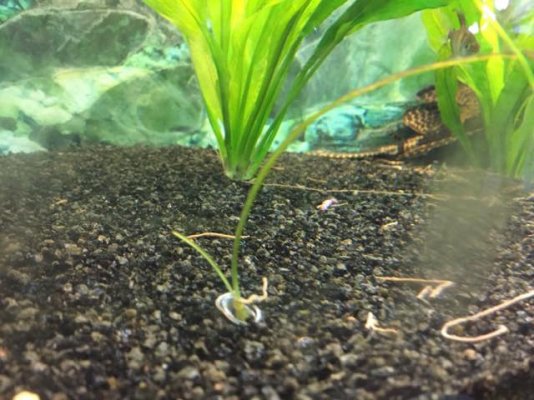You are using an out of date browser. It may not display this or other websites correctly.
You should upgrade or use an alternative browser.
You should upgrade or use an alternative browser.
Lush ferts from eBay?
- Thread starter bhavik95
- Start date
The friendliest place on the web for anyone with an interest in aquariums or fish keeping!
If you have answers, please help by responding to the unanswered posts.
If you have answers, please help by responding to the unanswered posts.
Do you have a link?
It looked like a complete NPK plus micros as a dry fert?
I've never used that one but prefer to buy my ferts seperate for N, P & K + micros. That way I can adjust dosing as the fish / fish food are supplying nitrates / phosphates partly or completely anyways.
I've never used that one but prefer to buy my ferts seperate for N, P & K + micros. That way I can adjust dosing as the fish / fish food are supplying nitrates / phosphates partly or completely anyways.
BioChem
Aquarium Advice Regular
It looked like a complete NPK plus micros as a dry fert?
I've never used that one but prefer to buy my ferts seperate for N, P & K + micros. That way I can adjust dosing as the fish / fish food are supplying nitrates / phosphates partly or completely anyways.
I personally wouldn't purchase a mixture of combined macros and micros. I'd dose alternately because micros and macros have an affinity for each other. They'll bind together and won't remain in ionized form for plants to use.
I'd stick to preparing two separate bottles as opposed to combining all nutrients in one.
thing is i am new to this dosing dry ferts to the tank before i was using other liquid products which didnt really help and therefore decided to go for this one and also that it is cheap and has both marco and mirco.
plus i wont know where to start from as i dont know what my plants are lacking and what they require? :/
BioChem so your saying that what i am dosing at the moment wont have any affect on my plants?
plus i wont know where to start from as i dont know what my plants are lacking and what they require? :/
BioChem so your saying that what i am dosing at the moment wont have any affect on my plants?
BioChem
Aquarium Advice Regular
Could be. What exactly is your dosing schedule? What are you dosing and how much? Also, what plants do you have?
I personally wouldn't purchase a mixture of combined macros and micros. I'd dose alternately because micros and macros have an affinity for each other. They'll bind together and won't remain in ionized form for plants to use.
I'd stick to preparing two separate bottles as opposed to combining all nutrients in one.
I was just thinking on this as dose phosphate and micros separately. I wonder if chelating agents could solve this? And if they did, would the product have a certain shelf life maybe? I have seperate dry ferts now so just in passing.
BioChem
Aquarium Advice Regular
I'm dosing the lush fert that I bought and I'm dosing 5ml a day this is only my second day
For plant I have about 3/4 Amazon swords about 3 jungle vale 1 Anubis and 1 crinum cal
Out of the plants you listed, the only column feeder is the Anubias. All others are root feeders (hence you need a nutrient rich substrate for them). Anubias is not the most demanding plant, so probably your dosing should be suffice. If you decide to add more demanding types, I'd most definitely purchase different macros and micros, and especially dose alternately.
thing is i have tried root tabs as well as clay peat to go under the substrate but doesnt seem to be doing much dont really notice much growth as well as the leaves are sort of pale have rips in them.
i know they are root feeders but wouldnt dosing to the water column help the root feeders or not at all?
i know they are root feeders but wouldnt dosing to the water column help the root feeders or not at all?
BioChem
Aquarium Advice Regular
I was just thinking on this as dose phosphate and micros separately. I wonder if chelating agents could solve this? And if they did, would the product have a certain shelf life maybe? I have seperate dry ferts now so just in passing.
Chelating agents are great deliverers (exchangers). Think about our respiratory system. Chelated iron, within our hemoglobin, acts in such a manner. They pick up CO2 from our muscles and travel to our lungs, where in our lungs they exchange the CO2 for Oxygen (O2), and then deliver the O2 back to muscles. But in order for this exchange to happen, there must be an agent strong enough to break the bond, holding the CO2 to the iron.
The same concept occurs with fertilizers in the aquarium. NPK (Nitrogen, Phosphorus, and Potassium) are in compound form within solution and therefore don't react with each other in a bottle. Dissolution occurs when they are introduced to the aquarium (massive body of water) and stem plants take them up. Remember, water is a polar covalent molecule, in which its polarization upon other compounds, many times weakens the bonds within these compounds. Therefore, these compounds dissociate and ionize.
To prevent any intermingling of macros and micros (especially in ionized form), its best to store them in separate bottles and alternate dose them daily.
BioChem
Aquarium Advice Regular
This is what my plants look like they look kind of pale and not great also not grow that much at all
What is wrong what is lacking in the tank?
Thanks View attachment 294729View attachment 294730View attachment 294731View attachment 294732
Any help will be appreciated!
What substrate are you using? Any substrate fertilizer?
BioChem
Aquarium Advice Regular
its very fine gravel with root tabs and clay peats under the plants.
no fertilised substrate
That's the problem. Root feeders not only require either a nutrient rich substrate, or root tab fertilizers, but they also need a substrate which can hold onto the nutrients. This is a substrate with a high Cation Exchange Capacity (CEC). The substrate holds onto the nutrients for the plant roots. Therefore, The nutrients don't leech into the water column. Once in the water column, its difficult for root feeding plants to take in those nutrients. Gravel has no CEC.
I personally invest in aquasoil. Its both nutrient rich and has a high CEC, but it is pricey. Another option is Eco Complete. Its not as high in CEC like aquasoil, but it does have some capacity. Your plants would do well in it.
As per fertilizer, I used to use Osmocote plus. I'd fill 00 sized pill capsules and I'd bury the capsules under the Eco Complete. A heads up, Osmocote Plus does initially leech ammonia into the water column, so frequent water changes are a must when you first fertilize.
Hope this helps!
What sort of light have you got and how long are you running it for? How deep is tank.
Pale leaves I can get with too much light / not enough CO2. So dosing any of the liquid carbons will help if you do not have injected CO2. And also reducing light duration. In a non-CO2 injected tank, plant growth will be very slow (which can be a good thing as less pruning).
Curled leaves / brown spots or holes on lower leaves are for my tank mainly a low potassium issue. This could well be related to lack of substrate tabs / quality CEC substrate as mentioned above as I dose very heavily on potassium.
Pale leaves I can get with too much light / not enough CO2. So dosing any of the liquid carbons will help if you do not have injected CO2. And also reducing light duration. In a non-CO2 injected tank, plant growth will be very slow (which can be a good thing as less pruning).
Curled leaves / brown spots or holes on lower leaves are for my tank mainly a low potassium issue. This could well be related to lack of substrate tabs / quality CEC substrate as mentioned above as I dose very heavily on potassium.
Chelating agents are great deliverers (exchangers). Think about our respiratory system. Chelated iron, within our hemoglobin, acts in such a manner. They pick up CO2 from our muscles and travel to our lungs, where in our lungs they exchange the CO2 for Oxygen (O2), and then deliver the O2 back to muscles. But in order for this exchange to happen, there must be an agent strong enough to break the bond, holding the CO2 to the iron.
The same concept occurs with fertilizers in the aquarium. NPK (Nitrogen, Phosphorus, and Potassium) are in compound form within solution and therefore don't react with each other in a bottle. Dissolution occurs when they are introduced to the aquarium (massive body of water) and stem plants take them up. Remember, water is a polar covalent molecule, in which its polarization upon other compounds, many times weakens the bonds within these compounds. Therefore, these compounds dissociate and ionize.
To prevent any intermingling of macros and micros (especially in ionized form), its best to store them in separate bottles and alternate dose them daily.
Thanks for this, great info.
What sort of light have you got and how long are you running it for? How deep is tank.
Pale leaves I can get with too much light / not enough CO2. So dosing any of the liquid carbons will help if you do not have injected CO2. And also reducing light duration. In a non-CO2 injected tank, plant growth will be very slow (which can be a good thing as less pruning).
Curled leaves / brown spots or holes on lower leaves are for my tank mainly a low potassium issue. This could well be related to lack of substrate tabs / quality CEC substrate as mentioned above as I dose very heavily on potassium.
For lighting I have got 2 x 30watts light they are called daylight deluxe and I run them from 1:30 to 11 so around 9 and half hours a day.
As for how deep it is it's around 45cm +/- 5 or 10cm depending on height of plants but it's a 200 litre tank
Yeah I don't add any co2 to the tank only what the fish give off and as for the holes they are more of cuts around the top of the leaves I don't get any brown spots only yellowing and the leaves dying away :/
I mean at the moment I am adding clay peat to the substrate under the roots of the plants but I don't think they are making much of a difference
You says it's a potassium issue but how can you tell the difference between and iron and potassium issue as don't you get yellowing with both?
Similar threads
- Replies
- 24
- Views
- 991
- Replies
- 5
- Views
- 1K
- Replies
- 7
- Views
- 481
Latest posts
-
-
Little Back Story on Az Fish Rescue Pendley's Plentiful Pets
- Latest: Andy Sager
-
-
-
-
-
-




